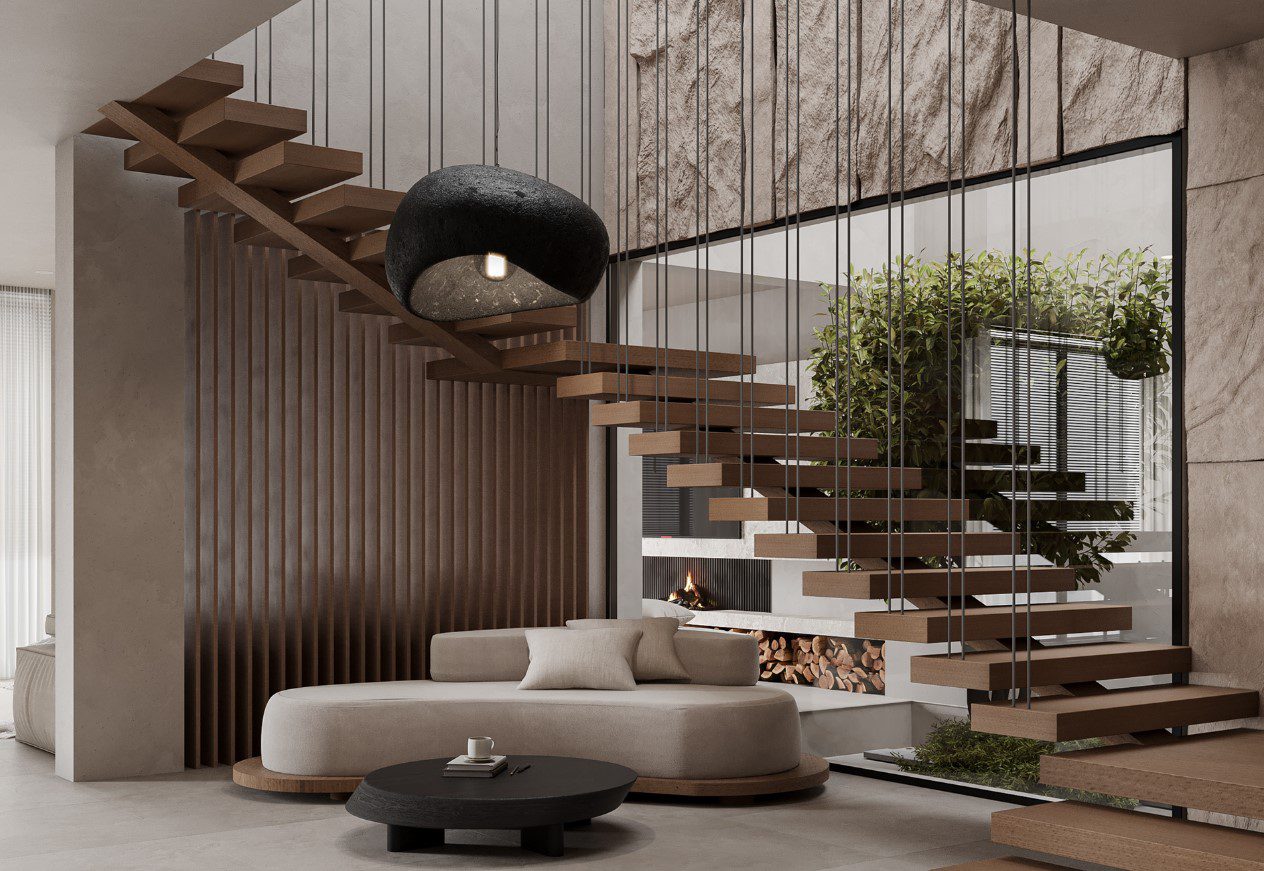
Image Source: Google
As concern for the environment continues to grow, more and more homeowners are looking for ways to make their homes eco-friendly. Contemporary home design offers a plethora of innovative and sustainable options that not only help reduce our carbon footprint but also create a healthier living space. In this article, we will explore some of the top eco-friendly elements that are being incorporated into modern home design. Refer: https://www.dknrdesigns.com/custom-design-services.
Energy-Efficient Lighting
One of the easiest ways to make your home more eco-friendly is by switching to energy-efficient lighting options. Not only do these lighting solutions consume less energy, but they also last longer, reducing the need for frequent replacements. Some popular energy-efficient lighting options include:
LED Lights
- Use up to 80% less energy than traditional incandescent bulbs.
- Last up to 25 times longer.
- Do not contain harmful mercury, making them safer to dispose of.
Solar-Powered Lights
- Operate on renewable energy sources.
- Can be used both indoors and outdoors.
- Provide an eco-friendly way to illuminate outdoor spaces.
Water-Saving Fixtures
Another essential aspect of eco-friendly home design is the incorporation of water-saving fixtures. By reducing water consumption, homeowners can not only lower their utility bills but also contribute to water conservation efforts. Some popular water-saving fixtures include:
Low-Flow Toilets
- Use significantly less water per flush compared to traditional toilets.
- Can save up to 18,000 gallons of water per year for a family of four.
- Available in various modern designs to suit different aesthetics.
Water-Efficient Showerheads
- Regulate water flow to reduce wastage without compromising on water pressure.
- Can save both water and energy used to heat water.
- Offer a refreshing shower experience while being environmentally conscious.
Sustainable Materials
Choosing sustainable materials for construction and furnishings is a key component of eco-friendly home design. These materials are produced using environmentally friendly processes and are often renewable or recyclable. Some popular sustainable materials used in contemporary home design include:
Bamboo
- Fast-growing and renewable resource.
- Durable and versatile for various applications, such as flooring and furniture.
- Has a unique aesthetic appeal that adds a touch of natural warmth to interiors.
Recycled Glass
- Made from post-consumer glass, reducing the need for new raw materials.
- Available in a wide range of colors and styles for countertops, tiles, and decorative accents.
- Durable and easy to maintain, making it a practical choice for eco-friendly homes.
Passive Heating and Cooling
Passive heating and cooling techniques are an effective way to regulate indoor temperatures without relying heavily on mechanical systems. By leveraging natural elements such as sunlight and airflow, homeowners can reduce energy consumption and create a more comfortable living environment. Some common passive heating and cooling strategies include:
Solar Panels
- Convert sunlight into electricity to power home appliances and systems.
- Offer long-term energy savings and potential rebates or incentives.
- Can be integrated into the design of the home for a seamless look.
Cross-Ventilation
- Maximize natural airflow by strategically placing windows and vents.
- Reduce reliance on air conditioning systems during mild weather.
- Create a fresher and healthier indoor environment by promoting ventilation.
Green Roofs and Living Walls
Green roofs and living walls are emerging as popular eco-friendly elements in contemporary home design. These features not only add a touch of nature to urban settings but also offer a range of environmental benefits. Some advantages of green roofs and living walls include:
Green Roofs
- Reduce heat absorption and energy consumption by providing natural insulation.
- Filter pollutants and carbon dioxide, improving air quality in urban areas.
- Create additional outdoor space for gardens, relaxation, or even vegetable cultivation.
Living Walls
- Enhance indoor air quality by absorbing pollutants and releasing oxygen.
- Add a decorative and visually appealing element to interior spaces.
- Promote biodiversity by providing habitat for beneficial insects and birds.
By incorporating these eco-friendly elements into contemporary home design, homeowners can not only reduce their environmental impact but also create healthier and more sustainable living spaces. Whether it's through energy-efficient lighting, water-saving fixtures, sustainable materials, passive heating and cooling techniques, or green roofs and living walls, there are numerous ways to make your home more eco-friendly without compromising on style and comfort.